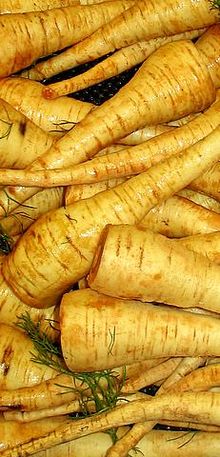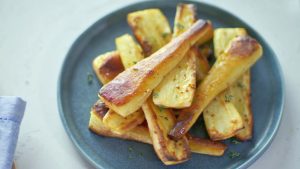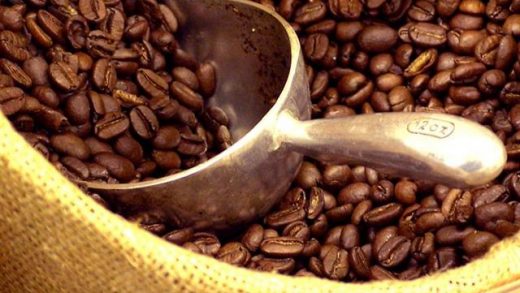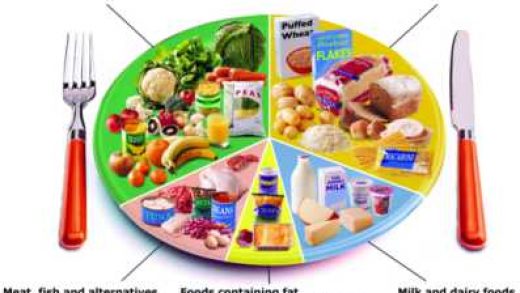Before the potato was introduced to Europe and other parts of the world, the most popular root vegetable was the parsnip. Even today, those who want a non-potato starch in their meals can use parsnips as a good substitute.
Parsnips are in the same family as carrots. They look like carrots but are dirty white in color. They are generally sweeter and tangier than carrots. They are cooked the same way you cook carrots.
Parsnips grow in cooler climates because frost is needed to develop their flavor. They are a favorite crop in areas with short growing seasons. They are richer in nutrients than carrots; especially rich in potassium.
Shopping: Look for roots that aren’t dried out or with papery skin.
Preparation: Trim off the root end and the top. Peel and slice according to the recipe or cooking method being used.
Most often, parsnips are cut into thick slices and boiled. Often they are added to soups and stews and then removed, leaving behind their unique taste and starch used to thicken the dish.
Roasted parsnips are a traditional Christmas dish in many places. They can be baked with a roast or slices laid out on a baking dish with extra virgin olive oil and a sprinkle of kosher salt. Put in an oven preheated to 400ºF for about 25 to 30 minutes or until fork tender.
For Frying, heat oil about an inch deep in a heavy pan, slice the parsnips as thin as you can, and fry them into chips or crisps. If you’ve ever had Terra Chips you’ve eaten a version of these.
We all need to eat more of them. Finding new ways to cook them will keep them interesting and something to look forward to when dinner comes around.




